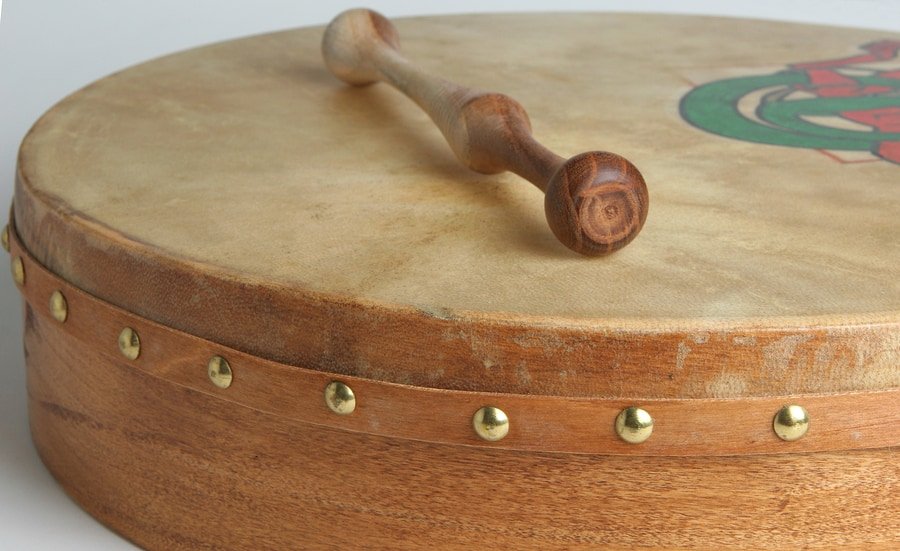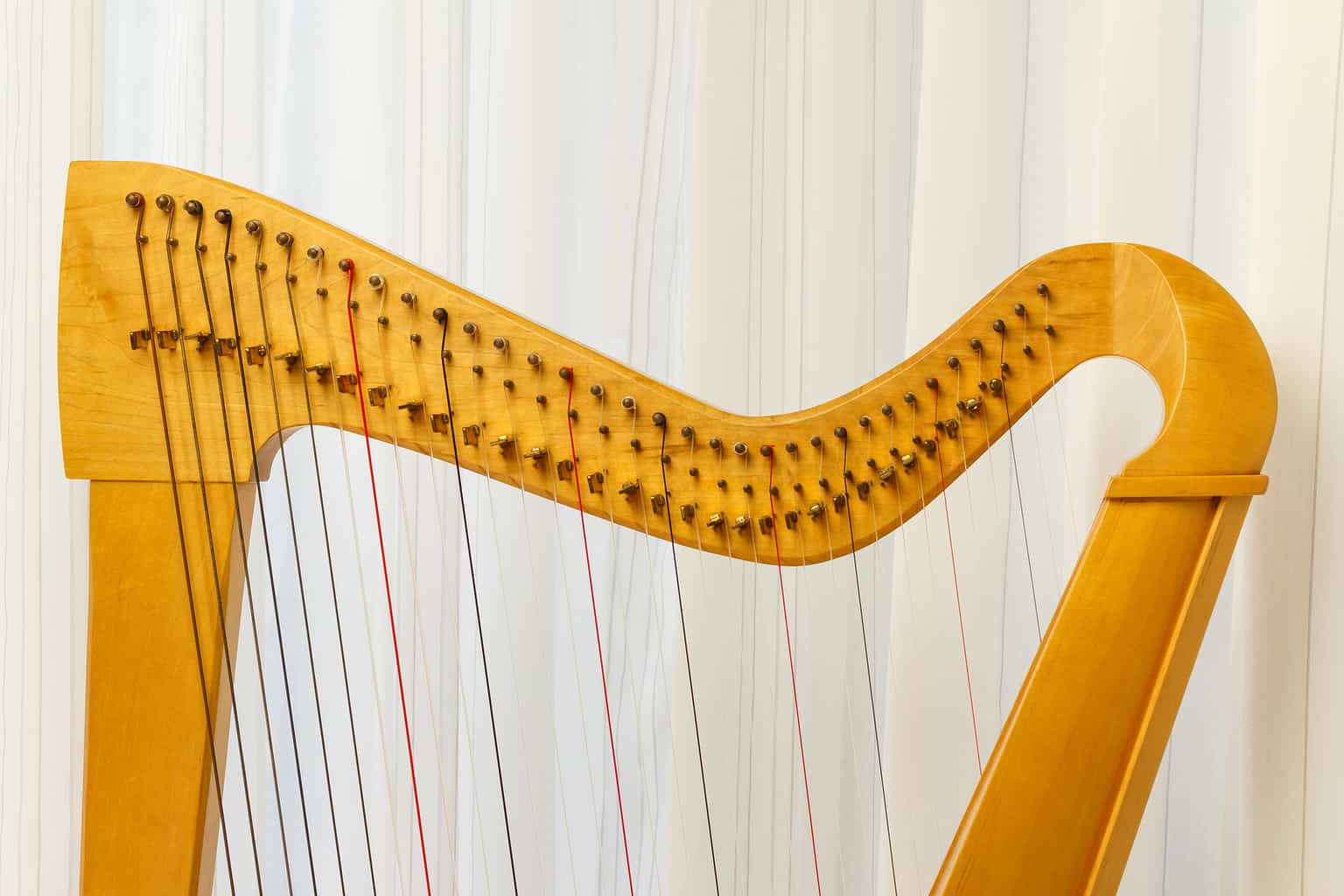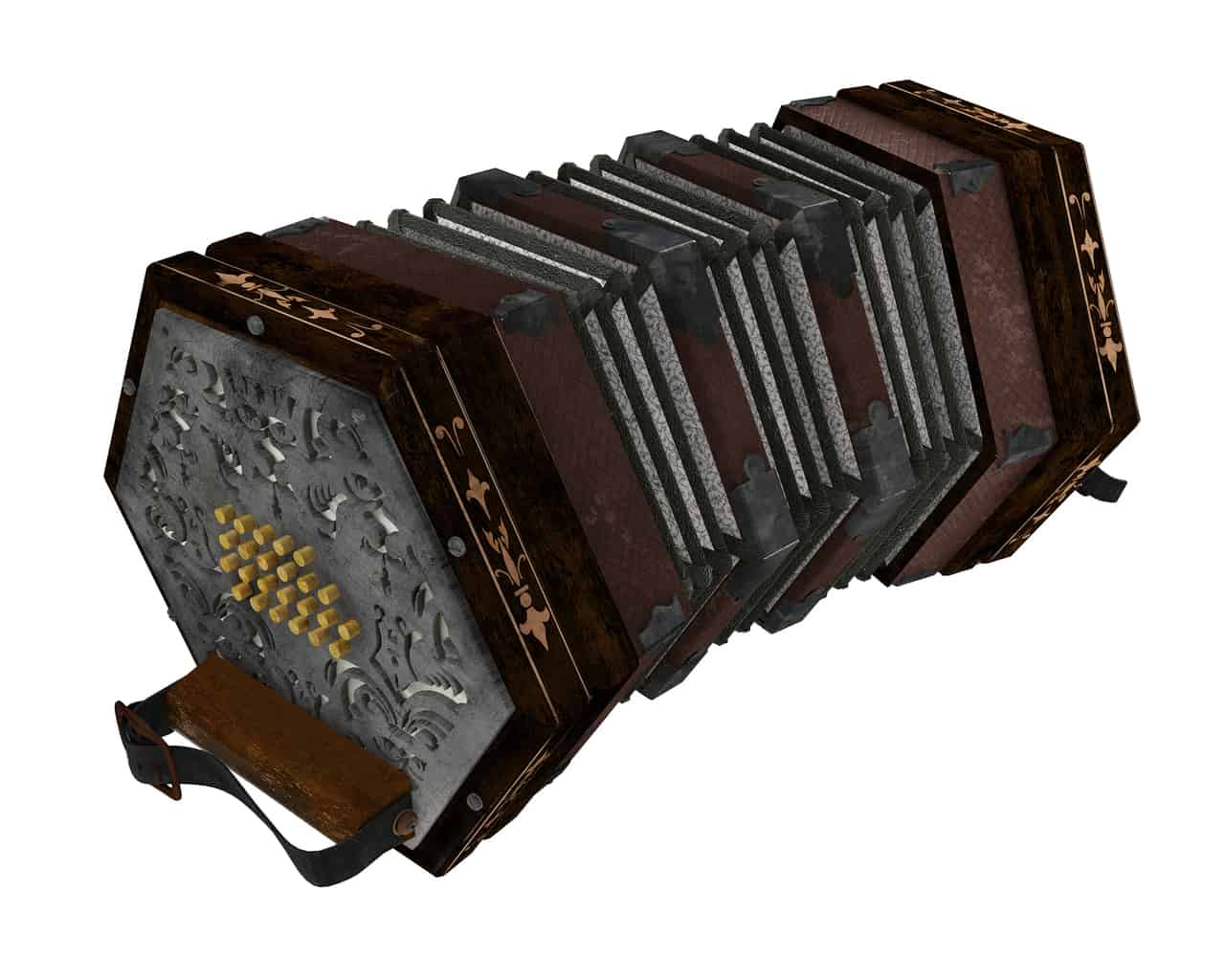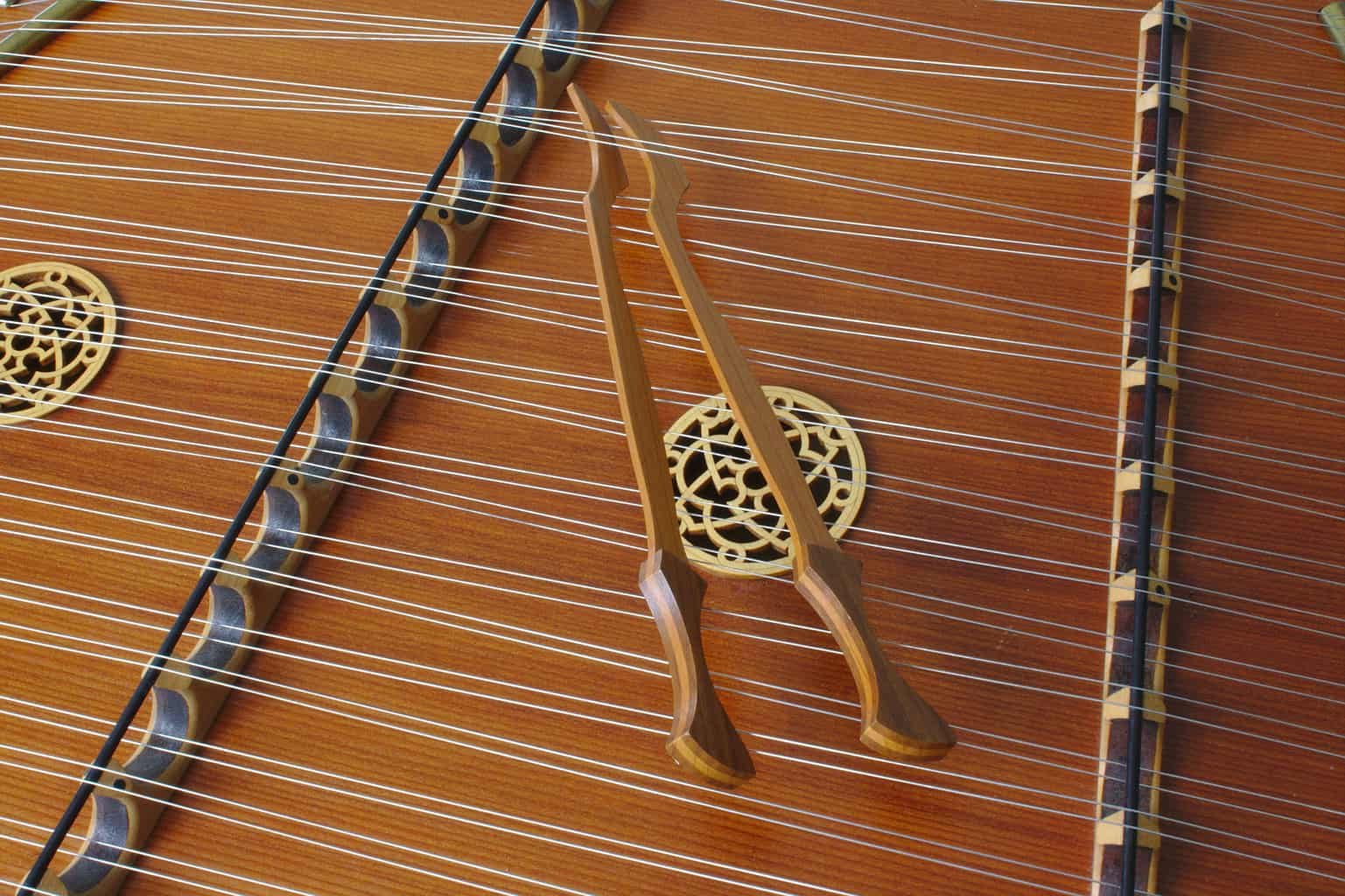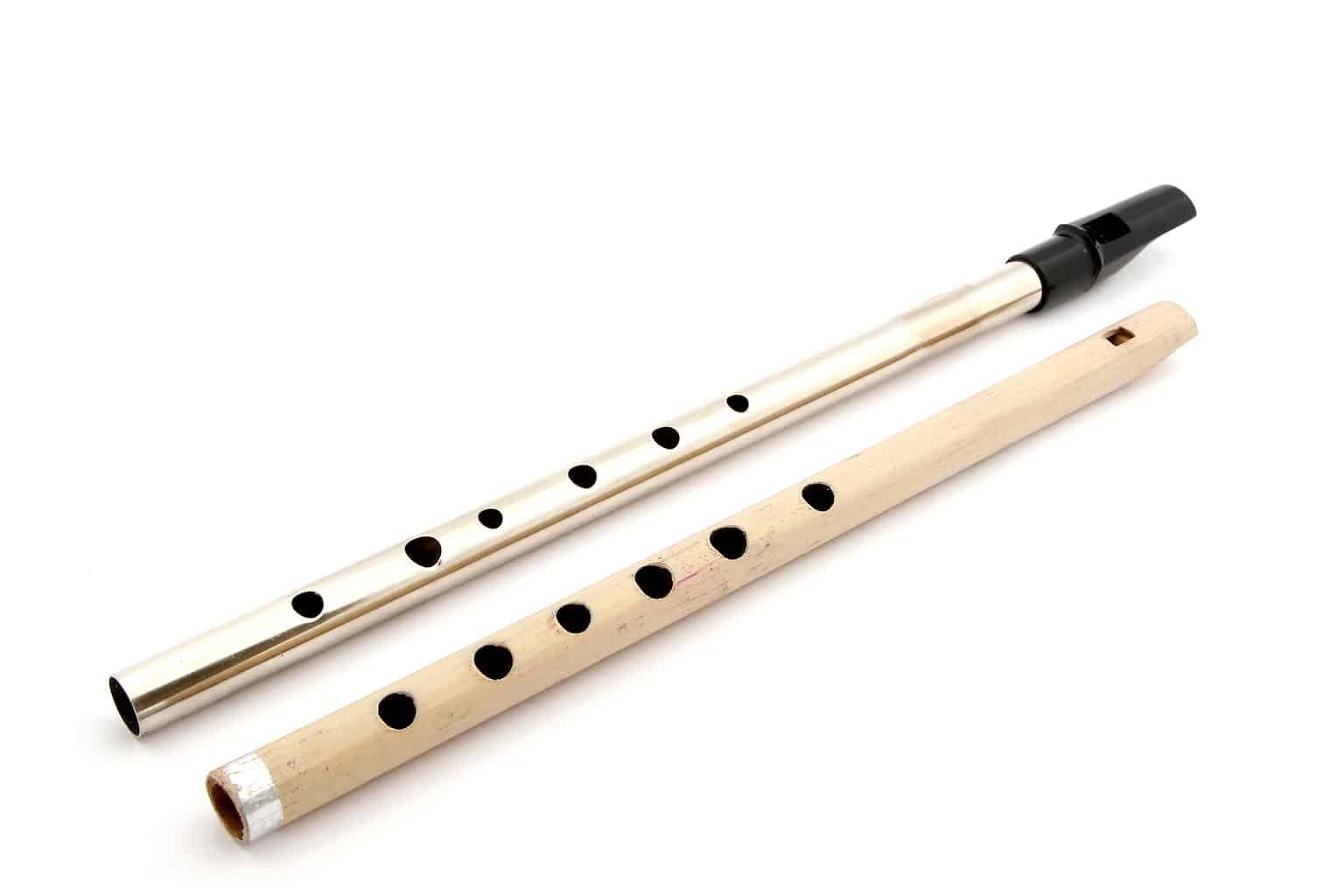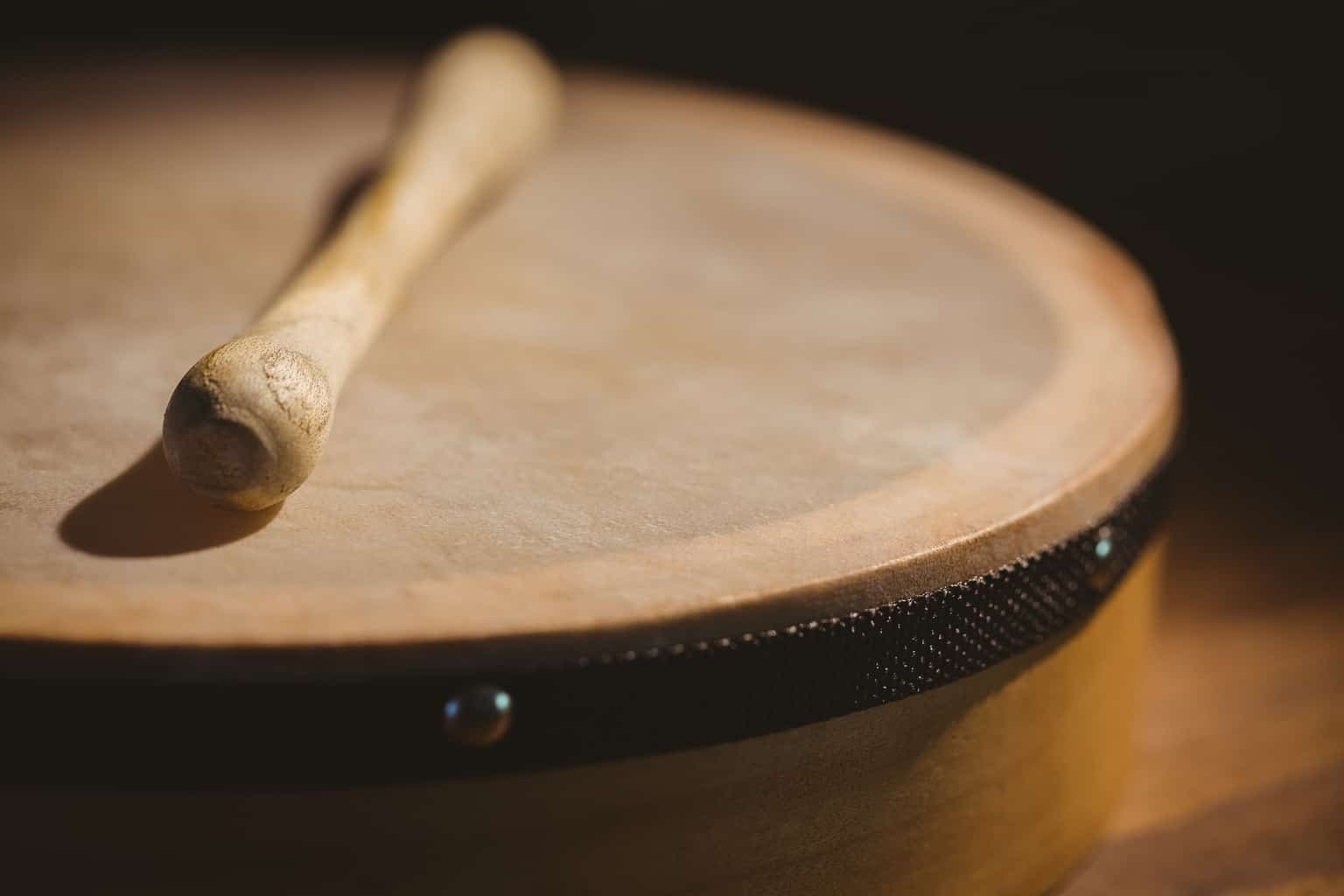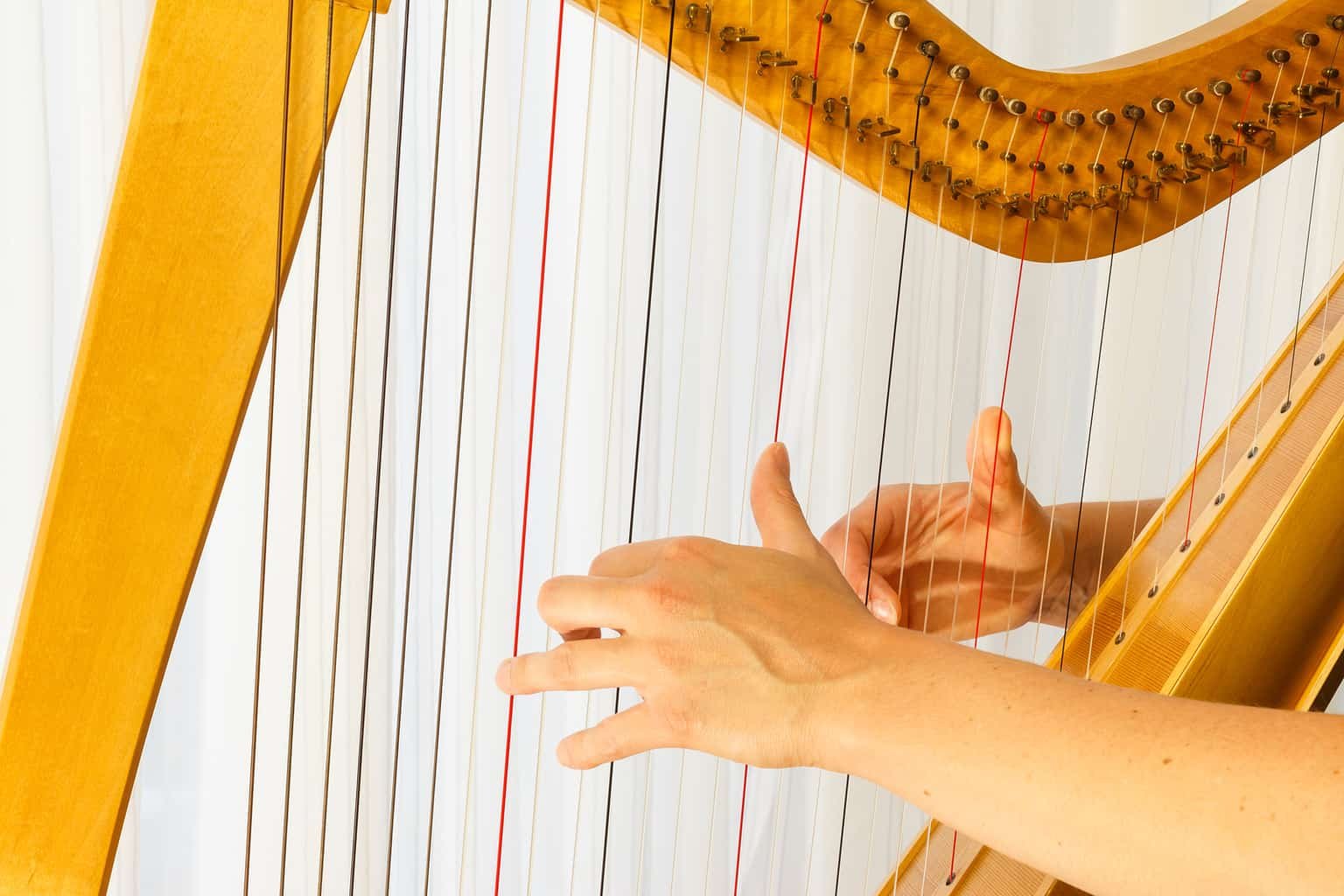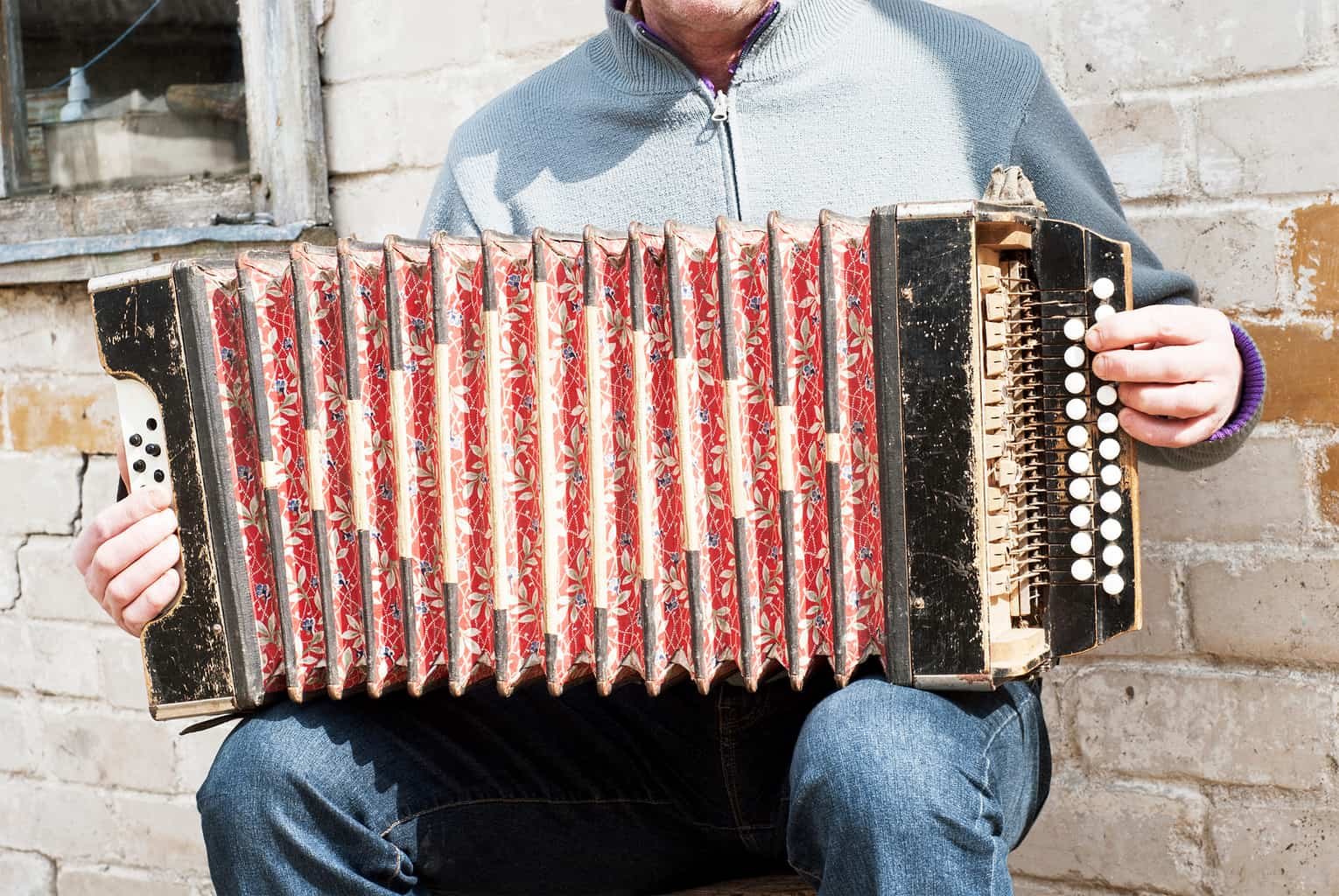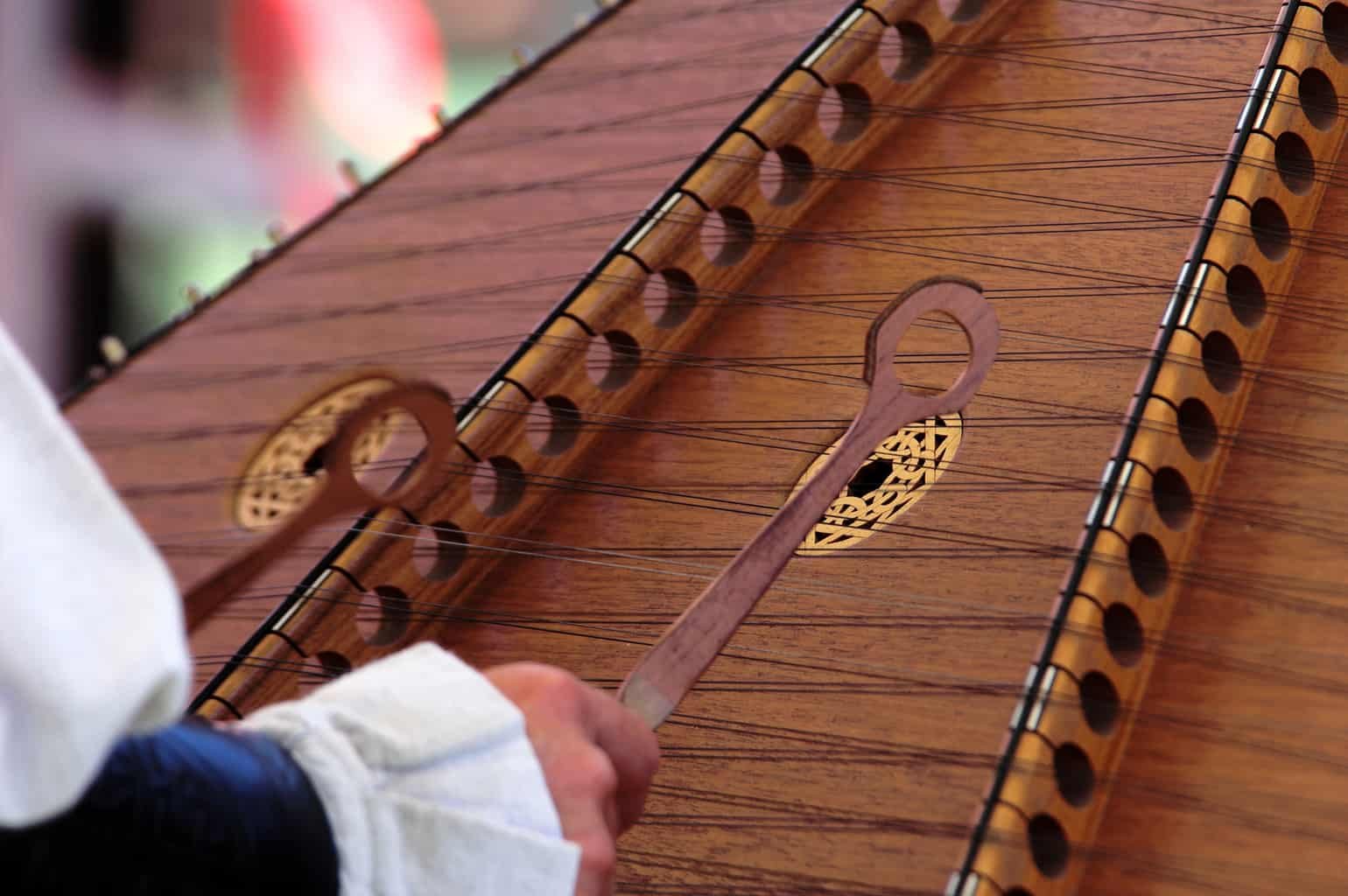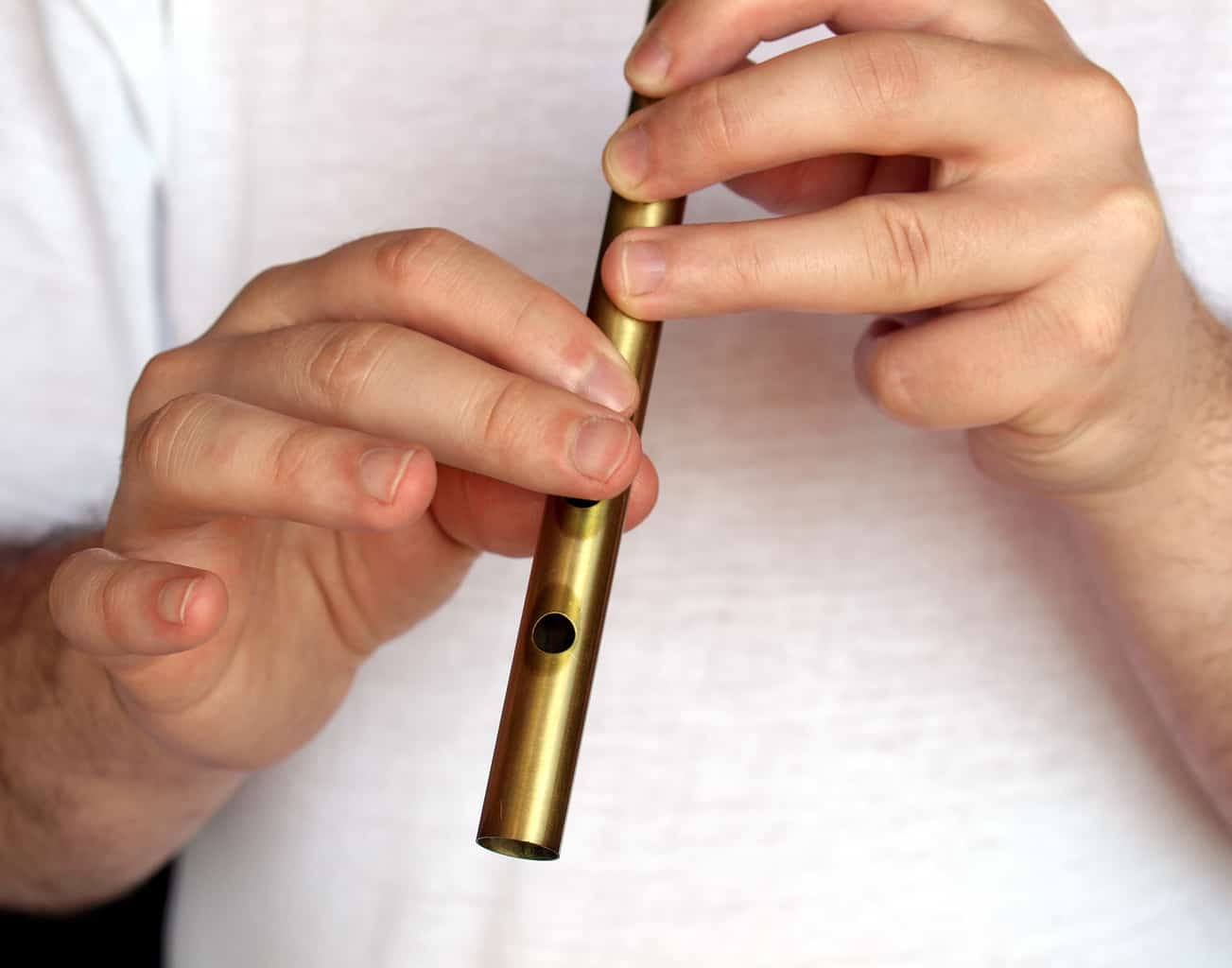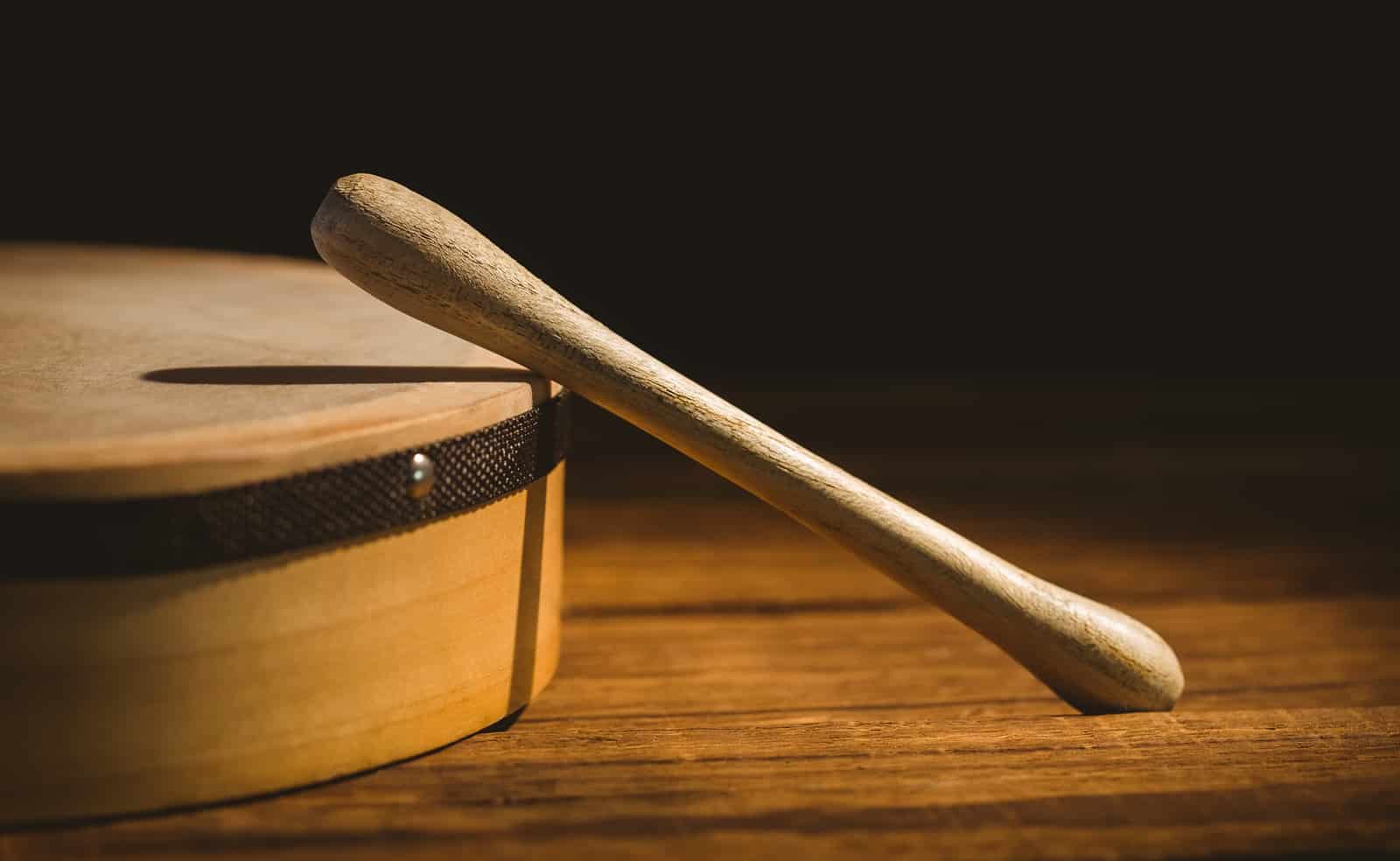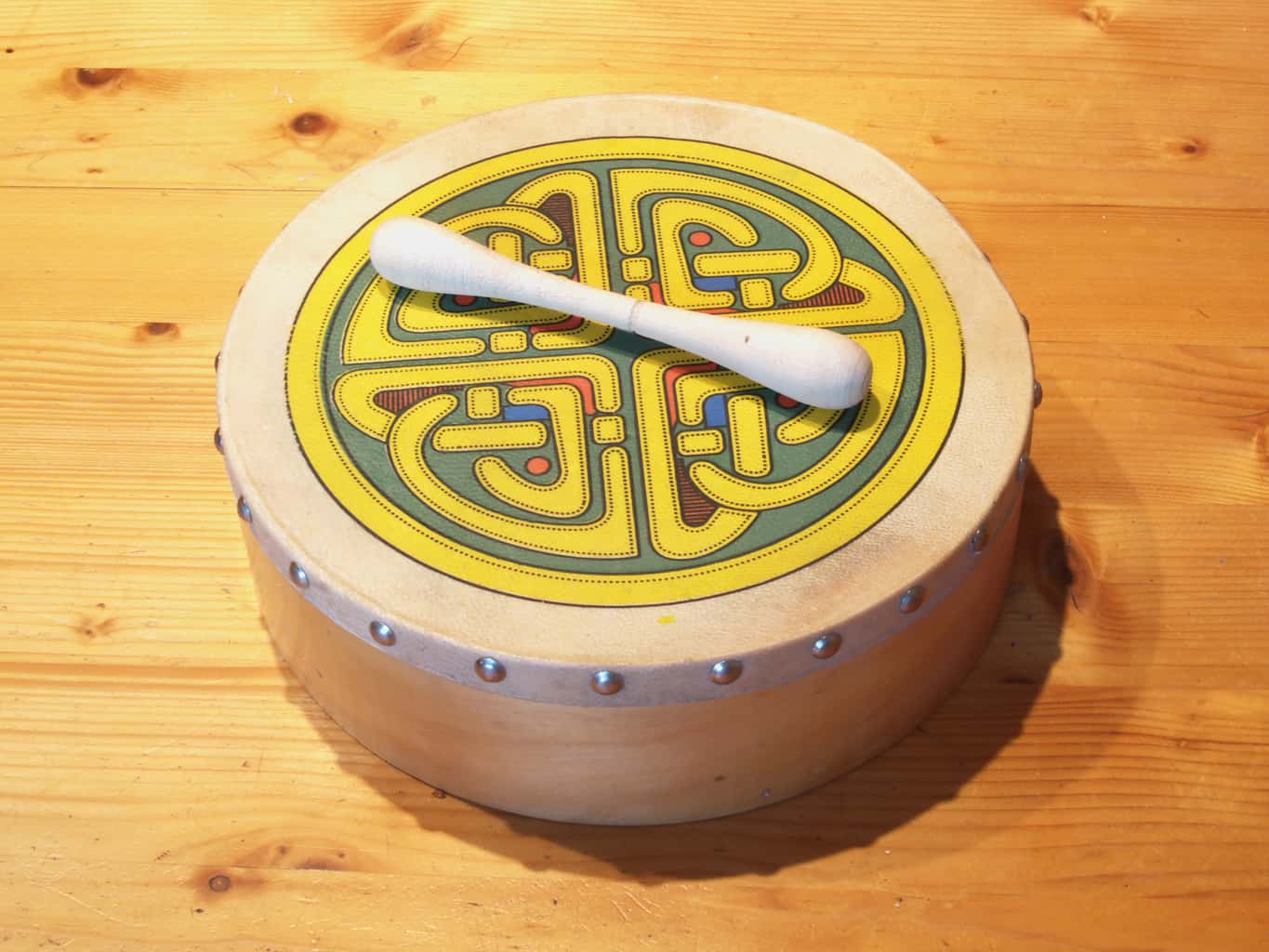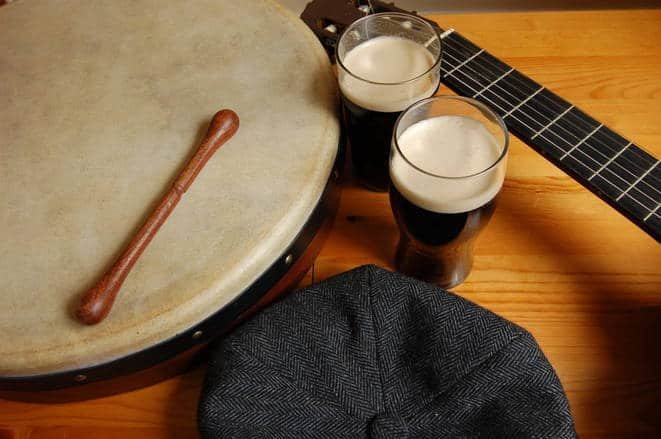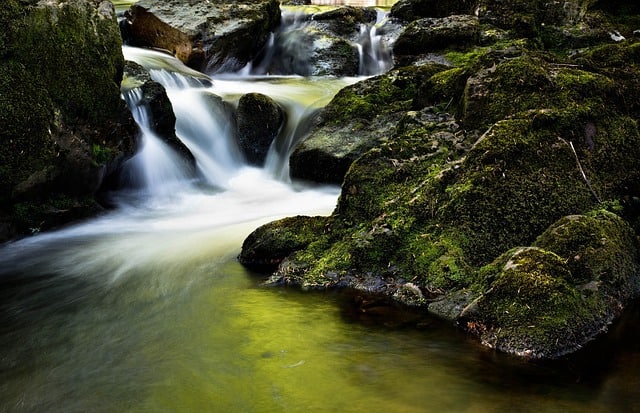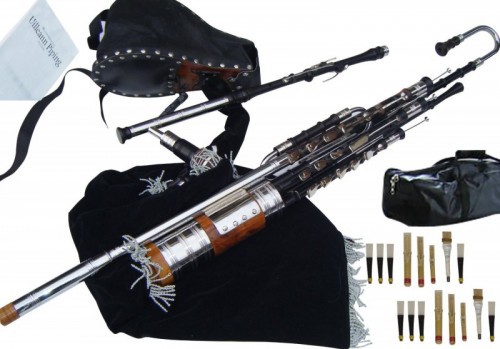
Uilleann pipes are recognized as the characteristic national bagpipes of Ireland. Also know as union pipes, the commercial name of this musical instrument has been partly derived from the Irish term piobai uilleann, which when translated literally means “pipes of the elbow” given the obvious method of its inflation. Interestingly enough, history tells us that “uilleann pipes” wasn’t used as a name for the intrument prior to the 20th century.
In order to play the instrument, the bag of the uilleann pipes is inflated thanks to a small set of bellows fastened around the waist and right arm of the musician. If the musician is left-handed, the orientation and location of all the components are reversed. The bellows of the uilleann pipes are able to relieve the musician from putting in the extra effort required to blow into a bag to maintain its pressure, and also ensure that the reeds are powered by relatively dry air which reduces any adverse effects of moisture on the longevity of the instrument.
The uilleann pipes are characteristically different from several other bagpipes with regards to their tone and wide range of notes. With a distinct harmonic structure, which sounds much sweeter and quieter than other bagpipes like the Great Highland Bagpipes, Great Irish Warpipes and Italian Zampognas, uilleann pipes are often played indoors and almost always while sitting down. Some pipers are so skilled with the uilleann pipes that they can even sing while playing the instrument.
Table of Contents
History of the Uilleann Pipes

“Billy Purvis (1784-1853)“. Licensed under CC BY 3.0 via Wikipedia.
The first Irish pipes were very similar to the Highland Pipes now played in Scotland. Usually referred to as the Great Irish Warpipes, the instrument was originally called piob mhor which, when translated from Irish or Scottish Gaelic, means “great pipe”. While these warpipes were widely prevalent on the battlefields of France, they peculiarly disappeared almost completely in Ireland.
Uilleann pipes, which required the addition of a bellows under the arm to pump air via a tube to the bagpipe under the other arm, were developed during the start of the 18th century. Historians have referred to the earliest form of the union pipes as the Pastoral Bagpipe or New Bagpipe, which required the bellows to be blown and played in either a seated or a standing position. The union pipes, which were developed later, drew inspiration from this musical instrument being traded back and forth between Scotland, Ireland and England through the 18th and 19th centuries.
The earliest surviving sets of the uilleann pipes date back to the second half of the 18th century even though there is no definitive record of the same. Only recently have scholars started to study the instrument and delve into the problems its development faced through various stages in history. According to their findings, it is largely believed that the pipes did, in fact, originate from the pastoral pipes before gaining popularity within the Protestant Anglo-Irish community in Europe and its pipers.
Certainly, most of the early pipers in Ireland, who used the uilleann pipes, happened to be Protestant. Jackson from Co Limerick and William Kennedy are the most renowned of them. The Protestant clergy typically employed such pipers as an alternative to the church organ. As late as the 19th century, the Uilleann Pipes were still common with the Anglican clergyman Canon James Goodman from Kerry, who interestingly had his instrument buried with him at the Creagh cemetery near Baltimore, County Cork. His friend and colleague John Hingston was also known to have played the Union Pipes.
Types of Bagpipes
Several variations of bagpipes are today found across Europe and the Middle East. According to Groves’ Dictionary of Musical Instruments, there are over 70 different types of bagpipes from across the world. Here is a list of some of the most recognized bagpipes.
Great Highland Bagpipes
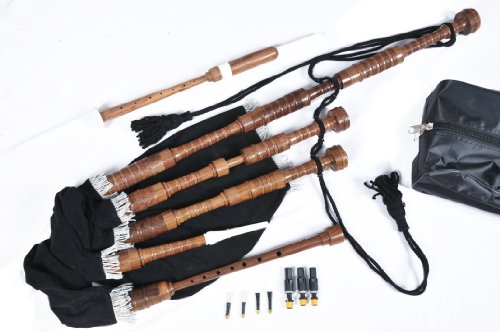
Even though the Great Highland Bagpipe is native to Scotland, it has achieved widespread recognition through its usage in pipe bands world over as well as in the British military. First attested in Scotland during 1400 AD, this bagpipe also seems to have appeared in Spanish artwork of the 13th century. Though widely recognized for its role in civilian and military pipe bands, the Great Highland Bagpipe is frequently used to play a solo virtuosic style of music, known as pibroch or piobaireachd.
Northumbrian Smallpipes
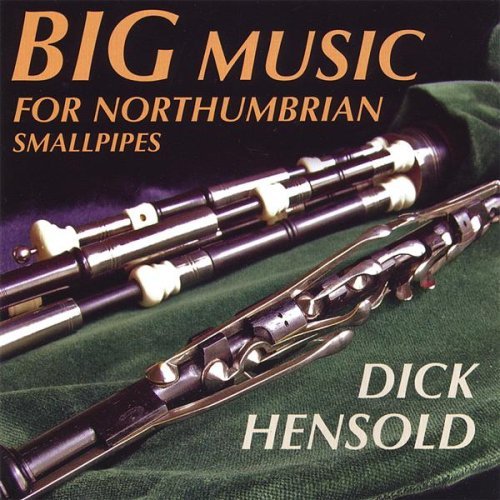
The Northumbrian Smallpipes are a bellows-blown type of bagpipes that originated in Northeastern England, particularly in Northumberland and Tyne and Wear. Also known as the Northumbrian Pipes, this instrument produces a much quieter sound than most other bagpipes.
Pastoral Pipes
Also known as Scottish Pastoral Pipes, Organ Pipe or Hybrid Union Pipes, the Pastoral Pipe is a bellows-blown bagpipe, widely recognized as the predecessor of the 19th century Union Pipes, which are today also known as the Uilleann Pipes. Similar in design and construction, the Pastoral Pipe had a foot joint that allowed it to play a low leading note and two octave chromatic scales.
Border Pipes
Border Pipes are closely related to the Great Highland Bagpipe and often confused with Scottish Smallpipes, even though they are a much older instrument and quite different in appearance. Its name refers to Scotland’s border country, where the instrument was once so common that most towns maintained a piper just so the pipes could be played from time to time.
Legacy of the Uilleann Pipes
One of the reasons that the uilleann pipes were invented was to compose music for the purpose of dancing. However, their use declined over time as the emergence of dance bands and commercial recordings led to the gradual waning of traditional dance in Europe. These Irish pipes are in several ways a curious hybrid. Considering the music of Ireland is essentially melodic, it may seem that the regulators that allow harmonic accompaniment are quite unnecessary.
Until recent times, the uilleann pipes seemed to be in grave danger of extinction. However, organizations like Na Piobari Uilleann have not only helped revive them, but also have made sure they survive by urging flourishing musicians to promote the musical instrument. Ironically, there are more pipers now than ever before though how many of them actually play the uilleann pipes continues to be speculated.
List of Notable Uilleann Pipes Players

- Ronan Browne – Ireland
- Willie Clancy – Ireland
- Troy Donockley – England
- Johnny Doran – Ireland
- Séamus Ennis- Ireland
- Paddy Keenan – Ireland
- Sean McAloon – Ireland
- Paddy Moloney – Ireland
- Fred Morrison – Scotland
- Mick O’Brien – Ireland
- Tomás Ó Canainn – Ireland
- Liam O’Flynn – Ireland
- Jerry O’Sullivan – New York
- Eric Rigler – New York
- Leo Rowsome – Ireland
- Davy Spillane – Ireland
- Calum Stewart – Scotland
- Cillian Vallely – Ireland

